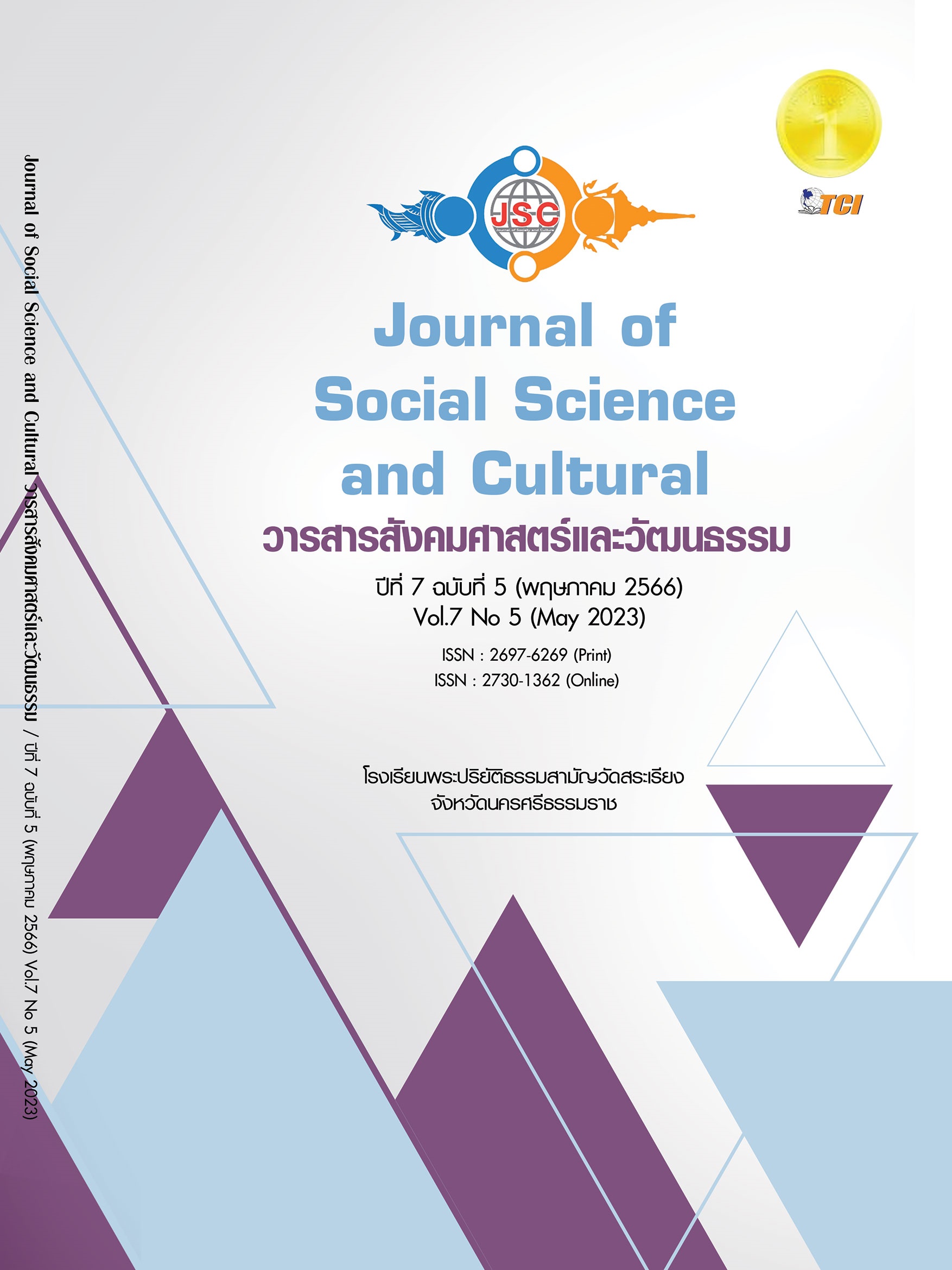THE LOGIC OF RESIDENTIAL CONSUMPTION OF THAI SOCIETY IN ADVERTISING
Main Article Content
Abstract
This research article aims to study the concept of consumption logic. in the housing advertisement The trade-off consumer logic takes place when housing becomes a commodity in the market system. Then, when housing as a commodity enters the advertising process. Residences will also have symbolic value and symbolic exchange value, for example, condominiums are a symbol of modernity and luxurious lifestyles of the new generation. These values are incremental values that seem to be more important than consumption logic. which is the true benefit of living The research results also indicated that The process of conveying the meaning in the living advertisement in online advertising media presents the logic of consumption through text and illustrations. in which the illustration The semantic characteristics consist of images that convey the meaning of travel and images that convey the location. It is often found in advertisements for residential condominiums. An image that represents the design concept and an image that represents the price. It is often found in advertisements for residential homes and condominiums. Including the use of symbolic images to convey the meaning of sales promotion. In the advertising image, the logic of consumption is used in a mixed manner. The advertising content will focus on the strength of the residential project. Including the identity and credibility of the real estate developer brand.
Article Details
References
กาญจนา แก้วเทพ. (2542). การวิเคราะห์สื่อแนวคิดและเทคนิค. (พิมพ์ครั้งที่ 4). กรุงเทพฯ: สำนักพิมพ์
เอดิสันเพรส โพรดักส์ จำกัด.
กาญจนา แก้วเทพ. (2557). ศาสตร์แห่งสื่อและวัฒนธรรมศึกษา. (พิมพ์ครั้งที่ 3). กรุงเทพฯ:
สำนักพิมพ์ภาพพิมพ์.
ณัฐวิภา สินสุวรรณ. (2553). การวิเคราะห์ตัวบทและการถอดรหัสความหมายเชิงสัญญะของโฆษณา
เครื่องดื่มแอลกอฮอล์ในสังคมไทย. ใน วิทยานิพนธ์ เคหพัฒนศาสตรมหาบัณฑิต สาขาเคหะการ จุฬาลงกรณ์มหาวิทยาลัย.
นิติ รัตนปรีชาเวช. (2561). หลักการและแนวคิดในธุรกิจอสังหาริมทรัพย์. (พิมพ์ครั้งที่ 2). กรุงเทพฯ:
โรงพิมพ์มหาวิทยาลัยธรรมศาสตร์.
พิชชา จิรเดชพิทักษ์. (2540). กลยุทธ์การโฆษณาของโครงการที่อยู่อาศัยในสภาวะเศรษฐกิจปกติและใน
สภาวะเศรษฐกิจถดถอย. ใน วิทยานิพนธ์ นิเทศศาสตรมหาบัณฑิต สาขานิเทศศาสตร์.
จุฬาลงกรณ์มหาวิทยาลัย.
สุภางค์ จันทวานิช. (2557). ทฤษฎีสังคมวิทยา. (พิมพ์ครั้งที่ 6). กรุงเทพฯ: สำนักพิมพ์แห่งจุฬาลงกรณ์
มหาวิทยาลัย.
Baudrillard, J. (1970). Consumer Society: Myths and Structures. CA: Sage Publications.
Baudrillard, J. (1981). For a Critique of the Political of the Sign translated with an
introduction by Levin. nashville: Telos Press.
Baudrillard, J., & Glaser, S. F.. (1994). Simulacrum and Simulation. Retrieved February 18,
, from https://cognitive-liberty.online/simulacra-and-simulation-jean-
baudrillard-1994/
Brandon Hensley. (2010). Body Billboards and Brand Colonization: Embodied Corporate
Advertising in Postmodern Branding Culture Florida Communication Journal. Vol.
Issue 2, p87-100. 14p.
Barbara Lammlein. (2014). Archetypes and Mythical Narratives in Car Advertising.
Frankfurt University of Applied Sciences, Germany.
Bourdieu, P. (1984). Distinction: A Social Critique of the Judgement of Taste. London:
Harvard
Dimitri Mortelmans. (2014). Measuring the luxurious in advertisements : On the popularization of
the luxury perfume Market. Semiotica; 199: 193 – 217.
Laura R. Oswald. (2015). The structural semiotics paradigm formarketing research: Theory, methodology,and case analysis. Semiotica 205: 115 – 148.


